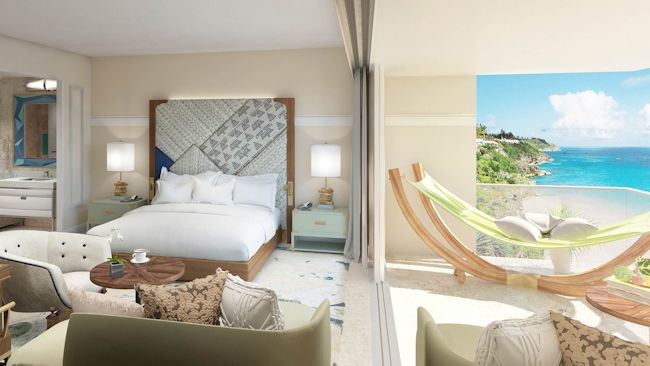
The rate at which our industry continues to evolve is staggering. Hospitality investors and managers are busy trying to understand which trends will help their properties stand out. OBMI asked its design team to share some of their insights and predictions on the direction of the hospitality industry in 2018. This is what came up:
TREND 1: FASHION BRANDS SUITING UP
It’s not unusual seeing a fashion brand partnering with a property to create a particular suite or spa, but it seems that now they’ve jumped in with both feet. Recent trends have fashion brands associating their famous names to hotel properties with varying degrees of involvement. Many designers believe designing hotels is a natural extension of their talents and are enjoying this new creative endeavor and the opportunities that it brings. From Bulgari to Armani to Tiffany Suites, to date over 22 properties are linked to fashion icons, with many more on the way, with this trend continuing its double-digit growth.
TREND 2: BRINGING THE OUTDOORS IN
Biophilic design is spreading throughout the hospitality industry like wildfire, from luxury properties to select-service hotels. This design style incorporates natural elements such as increased exposure to daylight, rooms with expansive views of nature, use of organic design materials, vertical gardens, and living green walls. Biophilic design is a natural fit for luxury hospitality, improving well-being and creating a natural extension of a property’s backdrop. Resort destinations are using biophilic design principles to integrate indoor and outdoor spaces, expanding the scope of guest suites and common areas. In urban areas, biophilic design has shown to reduce stress and make guests feel connected to the natural environment.
These principles are also shaping and redefining room designs. For example, at the currently under construction St. Regis Bermuda, where guestroom footprints are being reduced while balconies and outdoor living areas are expanding. This design allows guests to enjoy the same square footage and reduce developer building costs. Hotels integrating these trends are experiencing better air quality and lower energy costs, benefitting from a 36 percent user rate – both active and passive – while conventional hotels saw only 25 percent. This trend is here to stay and will likely continue to evolve in terms of design too.
TREND 3: BRANDS FLEX THEIR STANDARDS
With consumers demanding authentic experiences, brands have begun to loosen their design standards, allowing the inclusion of local architecture, design, and artisanal elements. While not new to 2018, we are starting to see the realization of these efforts, which began to take effect during the past few years. Sheraton rolled out their Sheraton 2020 program in 2015 to formally have their brand accommodate more “local, lifestyle-oriented, and destination-specific design.”
It's an exciting time in our industry and hotels can benefit greatly from implementing these new trends. When deciding which trends to implement for your hotel development project, it’s important to stay authentic, sensitive to your particular location, and accommodating to your customer.


